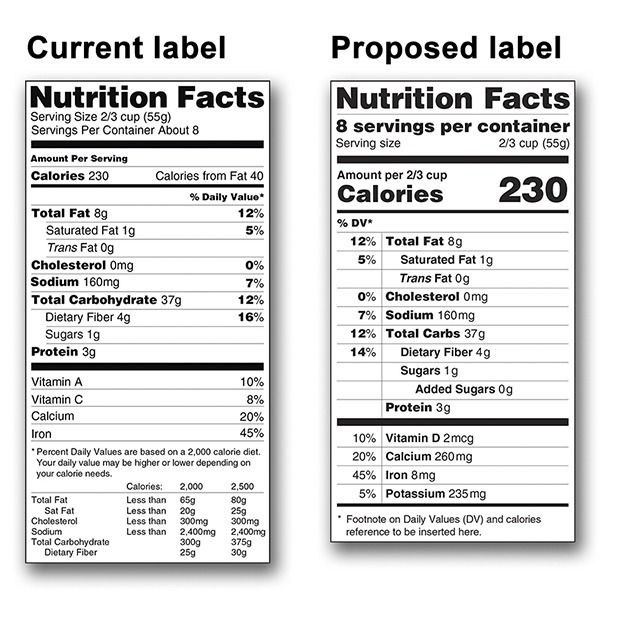By Chelsey Lindahl,
RD, CD, wellness dietitian
MultiCare Health System
A proposed makeover to the “Nutrition Facts” label found on foods was unveiled Feb. 27 by the Food and Drug Administration, with help from First Lady Michelle Obama and her Let’s Move campaign.
The food label was last revised was in 2006, with the addition of trans fats.
A major makeover, however, hasn’t occurred in more than 20 years. Consumers and health advocates alike are sure to find the proposed changes helpful and refreshing.
What changed? And why?
The most significant changes include increased emphasis on calories and added sugar.
Calorie content, which is found near the top of the food label, will now be in large, bold text. Calories from fat will no longer be listed alongside calorie information, as research now tells us that the type of fat consumed is most important.
With the added interest and nationwide knowledge about excess consumption of added sugars, consumers will now be able to clearly note from food labels the amount of naturally occurring vs. added sugars in a food.
What about serving sizes?
Another significant change will be an adjustment in serving sizes on packaged foods, making them more visible and more realistic to reflect how portions have changed over the past two decades.
For example, a serving of ice cream is currently a half-cup and will be increased to 1 cup. Additionally, snack foods that have more than one serving per container will be required to have a dual label, one “per serving” and one “per package.”
Now required: Vitamin D and potassium
Vitamin D and potassium, two nutrients that many Americans do not get enough of, will now be required.
Both nutrients in insufficient quantities increase our risk for chronic disease; vitamin D for its role in bone health, as well as other benefits in the body, and potassium for its role in blood pressure and cardiovascular disease.
Noting vitamin A and vitamin C on food labels will no longer be required, although food manufacturers could list it, if desired.
Start paying attention to daily value
Percentage daily value (DV) information, possibly the most underused and most helpful part of a food label, will be moved to the right side of the food label making it more prominent.
For consumers who aren’t currently using this tool, now is the time to start!
If a percentage DV is close to 20% the food is high in that nutrient, if the percentage DV is close to 5% it is low in that nutrient.
We want to choose foods high in nutrients like fiber, potassium, vitamin D, calcium and iron and foods low in saturated fats (additionally look for foods with zero trans fats), cholesterol and sodium.
What could be improved?
As a dietitian, other changes I would have liked to of see include increased emphasis on food ingredients and a percentage daily value for added sugars (the American Heart Association recommends no more than 24 grams daily for adult women and 36 grams for men).
Another great change would have been to move the fact label to the front of food packages as has been done successfully in other countries. However, truthfully, from a dietitian’s perspective, I am pleasantly surprised and excited about the changes overall.
What’s next?
The proposed changes are open to public comment for 90 days.
Following this it may take a year or more for changes to be implemented.
There will be a cost to the food industry to make these changes which is estimated to be around $2 billion. However, the health benefit over time is estimated to top $30 billion.
While we may not see the actual implementation for some time, the proposed changes are a much needed and superb step in our nationwide journey toward wellness and improved health.
Chelsey Lindahl, RD, CD, is a wellness dietitian at the MultiCare Center for Healthy Living, which helps educate children and families in Pierce County about healthy lifestyle choices through programs such as “Ready, Set, Go! 5210” (www.multicare.org/5210). If you have questions, call Lindahl at 253-301-5095 or email chelsey.lindahl@multicare.org.
Talk to us
Please share your story tips by emailing editor@kentreporter.com.
To share your opinion for publication, submit a letter through our website https://www.kentreporter.com/submit-letter/. Include your name, address and daytime phone number. (We’ll only publish your name and hometown.) Please keep letters to 300 words or less.

